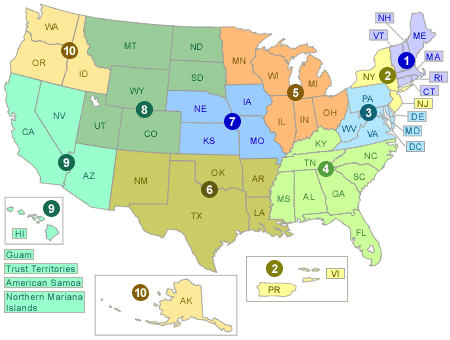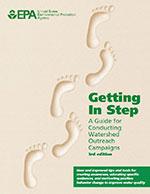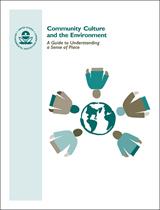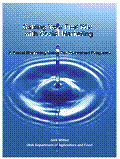What You Can Do: Healthy Watersheds Projects in Your Area
Find Healthy Watersheds Projects

Watershed assessment or protection activities may be occurring in your area. Interested in finding more information, or possibly getting involved? Click on a region or state in the map above to learn more about healthy watershed assessment and protection projects and programs from local to national scales.
Already aware of watershed activities in your area, but looking for useful techniques to get your message out? Take a look through the list below for a variety of EPA and non-EPA watershed outreach tools and links.
Use Watershed Outreach Tools

The following informational resources are publicly available from EPA and others, as indicated, and may be helpful in organizing, promoting and carrying out healthy watersheds protection efforts.
EPA’s Nonpoint Source Outreach Toolbox contains a wealth of information and resources for watershed outreach campaigns including: guides; ready-made logos, slogans, and mascots; surveys and evaluations; and TV, radio and print ads. Permission for use has been granted by most of the content developers.
 Watershed Academy Web Through the Watershed Academy Web, EPA offers over 50 self-paced training modules that represent a basic and broad introduction to the watershed management field. Modules take half an hour to 2 hours to complete. Courses include Top Ten Watershed Lessons Learned, Introduction to the Clean Water Act and Wetland Functions.
Watershed Academy Web Through the Watershed Academy Web, EPA offers over 50 self-paced training modules that represent a basic and broad introduction to the watershed management field. Modules take half an hour to 2 hours to complete. Courses include Top Ten Watershed Lessons Learned, Introduction to the Clean Water Act and Wetland Functions.Community Culture and the Environment: A Guide to Understanding a Sense of Place Exit This guide provides a process and set of tools for defining and understanding the social and cultural aspects of community-based environmental protection.
Environmental Health Resources for Community Members Many communities are taking action on environmental issues to address health concerns. Learn more about the resources available to help your community at this website.
Project NEMO (Nonpoint Education for Municipal Officials) ExitThe National NEMO Network is a confederation of 32 educational programs in 31 states dedicated to protecting natural resources through better land use and land use planning. It uses geographic information system (GIS) technology to educate landowners and municipal officials about nonpoint source pollution and watershed protection. Each program is patterned after the original NEMO Program developed at the University of Connecticut, but has been adapted to reflect each state’s unique character, priorities, geography and issues. These programs have joined together to create a unique national network to share information, educational methods and technical tools across state and agency lines.
Responsive Management Water Resources Reports ExitThis site contains several reports that describe efforts to integrate public survey results into water resource management planning. Examples include Americans’ Knowledge of and Attitudes Toward Water and Water-Related Issues and Opinions on and Behaviors Affecting Water Issues in the Appoquinimink River Watershed Among Watershed Residents.
Ohio Watershed Network ExitThe Ohio Watershed Network was formed to provide communities and natural resource managers with the information they need to effectively protect water resources and their ecosystem services. The Network offers courses, events and forums, and provides a network for watershed groups.
Healthy Rivers: A Water Course ExitHealthy Rivers is an online, multimedia tool to understand the ecology, management, and stewardship of river and stream systems. The Healthy Rivers program explains natural structure and function of river systems using a five-component framework of flow, shape, connections, quality and life. Six case studies examine the history of river use and provide a basis for a future vision of water resource management. A section explores the true value of river system goods and services, which leads to inspiring examples of local leaders and practical, action-oriented ideas for next steps that each of us can take toward healthier water resources.
Engaging Oregonians in Conservation: Strategy Outreach, Conservation Education and Fish and Wildlife-Based Tourism (PDF) (8 pp, 1.61 MB) ExitThis report from the Oregon Department of Fish & Wildlife details objectives and opportunities in conservation education, fish and wildlife-based tourism, and human dimensions research in Oregon. These approaches help to link people with their natural communities.
Stewardship Incentives: Conservation Strategies for Oregon’s Working Landscape (PDF) (140pp, 1.2MB) ExitThis report helps landowners understand the many incentives available for conservation actions, including regulatory relief, direct financial assistance and market-based incentives.
Baltimore County Forest Sustainability Program: Linking Communities to the Montreal Process Criteria and Indicators ExitThe Montreal Process Criteria and Indicators Exitprovides a framework that addresses social, economic and ecological aspects of sustainable forest management. Baltimore County is a pilot application of this framework and the program has allowed diverse stakeholders with varied interests to understand the many ecosystem services provided by sustainably managed forests. Because stakeholders were involved in the process from the beginning and the program incorporates not only conservation objectives, but social and economic objectives as well, a greater level of support has been generated for the program.
The Bear Creek Watershed Protection Overlay District (PDF) (3pp, 0.1MB) ExitThe citizens of Cannon Township, just north of Grand Rapids, Michigan realized that development pressures were threatening Bear Creek in the early 1990s. In addition to a stormwater ordinance and a site ranking system for new development, the township created the Bear Creek Watershed Protection Overlay District. This overlay district requires vegetation throughout the stream corridors and septic system setbacks from streams and tributaries. This level of protection would not have been possible without the level of community support and active involvement of the citizens of Cannon Township.
National Extension for Water Outreach Education ExitWhether planning a new outreach effort or revitalizing an existing one, incorporating best education practices (BEPs) into your water management strategies is critical for achieving success. Web site resources help educators to: connect the situation with the people, choose achievable goals, select relevant outreach techniques and get measurable results.
River Network ExitThe River Network provides a variety of resources available to watershed managers for involving people in aquatic resource management. Guidebooks, trainings and networking opportunities are some of the resources available.
 Getting Your Feet Wet with Social Marketing: A Social Marketing Guide for Watershed Programs (PDF) (143 pp, 7.17 MB) ExitThis social marketing guide, available from the State of Utah Department of Agriculture and Food, is specifically aimed at training watershed managers to use the principles of social marketing to promote behavior change that will improve watershed health and water quality.
Getting Your Feet Wet with Social Marketing: A Social Marketing Guide for Watershed Programs (PDF) (143 pp, 7.17 MB) ExitThis social marketing guide, available from the State of Utah Department of Agriculture and Food, is specifically aimed at training watershed managers to use the principles of social marketing to promote behavior change that will improve watershed health and water quality.A Step-by-Step Guide to Conducting a Social Profile for Watershed Planning (PDF) (96 pp, 2.07 MB) ExitThis free guidebook provides a detailed methodology for assessing social issues that should be addressed in any watershed management plan or conservation activity. A social profile is a collection of baseline data that describes characteristics of a community or people in a defined area. This collection of data profiles human life in the community by describing: (a) land use and ownership; (b) economic vitality; (c) community capacity; (d) governmental and political structures; and (e) public attitudes. The purpose of the social profile is to provide data and information for a reasonable summary of social issues in the watershed management plan that ultimately leads to more informed decisions by the watershed planning committee.
